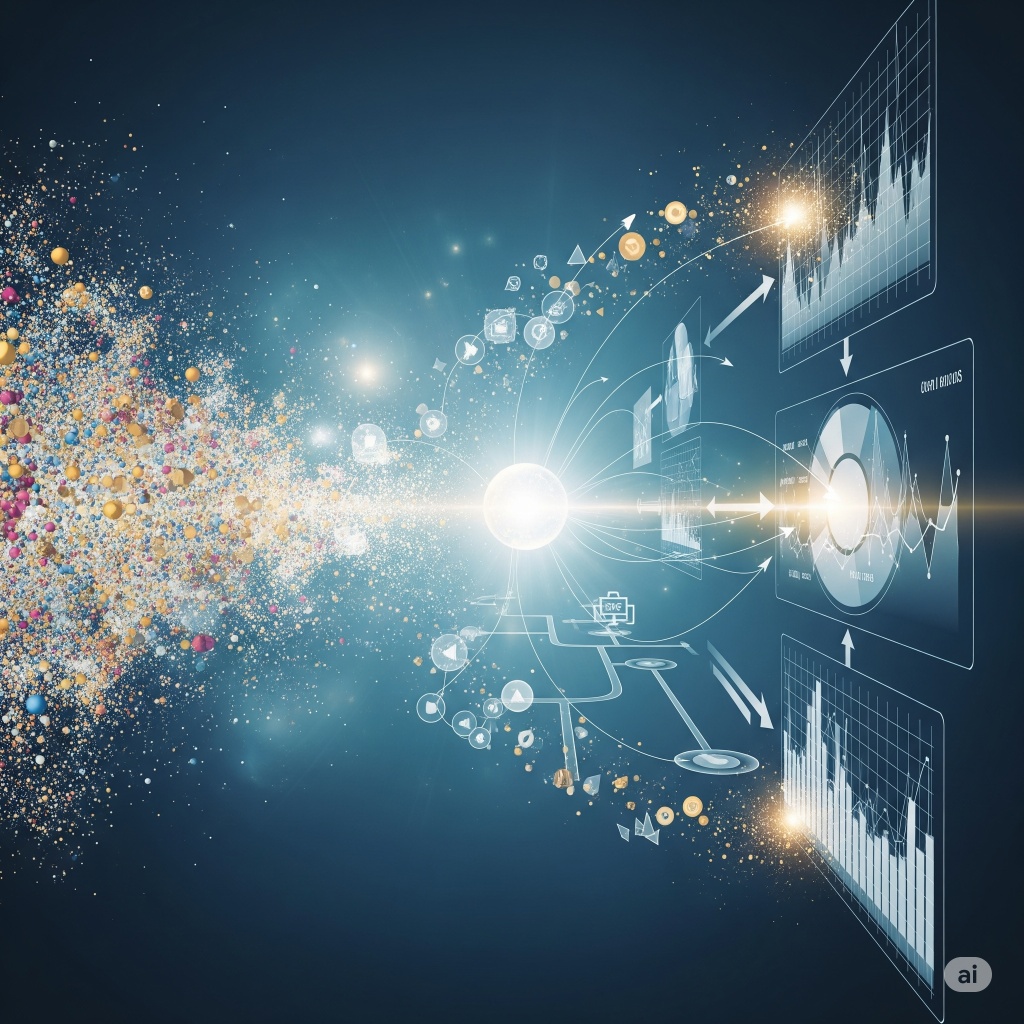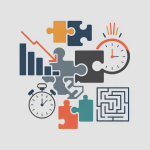
Data interpretation and analysis are pivotal skills in the 21st century, transcending specific industries or roles.
In an increasingly data-rich world, the ability to make sense of information, identify trends, draw meaningful conclusions, and ultimately inform effective decision-making is no longer a niche expertise but a fundamental requirement for success.
This comprehensive article goes into the core aspects of data interpretation and analysis, emphasizing their definition, profound importance, and the critical role data plays in shaping sound decisions, all from the crucial perspective of skill development.
Introduction to Data Interpretation and Analysis: Navigating the Information Deluge
We live in an age characterized by an unprecedented volume and velocity of data.
From social media interactions and financial transactions to scientific research and sensor readings, data is being generated at an exponential rate.
While this abundance presents immense opportunities, it also poses a significant challenge: how do we transform raw data, often chaotic and unstructured, into actionable insights?
This is precisely where data interpretation and analysis come into play.
At its heart, data interpretation is the process of reviewing data through some kind of systematic process to arrive at conclusions.
It involves examining the results of data collection, identifying patterns, and understanding what those patterns signify.
It’s about making sense of the numbers, charts, and graphs, translating them into clear, understandable language, and recognizing their implications within a specific context.
Data Analysis
Is a more expansive process that encompasses the entire journey from raw data to informed conclusions.
It involves inspecting, cleansing, transforming, and modeling data with the goal of discovering useful information, informing conclusions, and supporting decision-making.
Analysis often precedes interpretation, providing the structured insights upon which meaningful conclusions can be drawn.
Think of it this way: Data analysis is like preparing a meal.
You gather the ingredients (data collection), clean them (data cleansing), chop and dice them (data transformation), and then cook them according to a recipe (data modeling and statistical analysis).
Data interpretation is then tasting the meal, understanding its flavors, and determining if it meets your expectations or needs.
The development of these skills is paramount because raw data, in isolation, holds little value.
It’s through the systematic process of analysis and interpretation that data transforms into a powerful asset, driving innovation, efficiency, and competitive advantage across every conceivable domain.
Definition and Importance: Why These Skills Matter More Than Ever
To fully appreciate the skill development perspective, it’s crucial to solidify our understanding of these definitions and their inherent importance.
Deconstructing the Definitions:
-
Data Interpretation: This is the phase where the “aha!” moments happen. After data has been collected, organized, and perhaps statistically processed, interpretation is the cognitive act of assigning meaning to the findings. It involves:
- Identifying Trends and Patterns: Spotting recurring themes, upward or downward trajectories, cyclical behaviors, or significant deviations.
- Recognizing Relationships: Understanding cause-and-effect linkages, correlations, or associations between different variables.
- Contextualizing Findings: Placing the data within the broader operational, historical, or environmental context. Without context, numbers are just numbers. For example, a 10% increase in sales is great, but its interpretation changes significantly if the market grew by 50% or if a major competitor went out of business.
- Formulating Conclusions: Drawing logical inferences based on the evidence presented by the data. These conclusions should be supportable by the analysis.
- Understanding Limitations: Recognizing what the data doesn’t tell you, the scope of the findings, and any potential biases or errors in collection or analysis. A good interpreter understands the boundaries of their conclusions.
- Identifying Trends and Patterns: Spotting recurring themes, upward or downward trajectories, cyclical behaviors, or significant deviations.
-
Data Analysis: This is the systematic application of statistical and logical techniques to describe, illustrate, condense, recapitulate, and evaluate data. It encompasses several stages:
- Data Collection: Gathering relevant information from various sources (databases, surveys, sensors, web scraping, etc.).
- Data Cleaning/Wrangling: Addressing inconsistencies, errors, missing values, duplicates, and outliers. This is a critical and often time-consuming step, as “garbage in, garbage out” applies emphatically to data.
- Data Transformation: Reformatting and restructuring data to make it suitable for analysis (e.g., aggregating data, creating new variables, normalizing data).
- Exploratory Data Analysis (EDA): Using statistical graphics and visualization techniques to uncover preliminary insights, identify patterns, and detect anomalies. This helps form hypotheses.
- Statistical Analysis: Applying statistical methods (descriptive statistics like mean, median, mode; inferential statistics like hypothesis testing, regression analysis, correlation) to test hypotheses, model relationships, and make predictions.
- Data Visualization: Creating charts, graphs, dashboards, and other visual representations to communicate findings clearly and effectively. This bridges analysis and interpretation.
- Data Collection: Gathering relevant information from various sources (databases, surveys, sensors, web scraping, etc.).
The Indispensable Importance:
The significance of developing strong data interpretation and analysis skills cannot be overstated in today’s professional landscape.
-
Informed Decision-Making: This is the most direct and impactful benefit. Instead of relying on intuition, anecdote, or “gut feelings,” decisions become evidence-based, leading to more strategic, effective, and often more profitable outcomes. This applies whether you’re a business leader deciding on market entry, a doctor choosing a treatment, or a public servant allocating resources.
-
Problem Solving and Innovation: Data analysis helps pinpoint the root causes of problems, rather than just treating symptoms. By identifying underlying patterns, it enables organizations and individuals to develop innovative solutions and anticipate future challenges. For instance, analyzing customer service data can reveal systemic issues leading to dissatisfaction, prompting process improvements.
-
Efficiency and Optimization: Data can reveal inefficiencies in processes, resource allocation, or workflow. By analyzing operational data, organizations can identify bottlenecks, streamline operations, reduce waste, and optimize performance across various functions, from manufacturing to logistics.
-
Competitive Advantage: In competitive markets, data is a differentiator. Companies that can effectively analyze market trends, consumer behavior, and competitor strategies gain a significant edge, enabling them to adapt quickly, launch targeted products/services, and capture market share.
-
Risk Management: By analyzing historical data and potential variables, organizations can identify and assess risks more accurately. This allows for proactive risk mitigation strategies, whether in finance, cybersecurity, or project management.
-
Personal and Professional Growth: Beyond organizational benefits, these skills empower individuals. They foster critical thinking, logical reasoning, and the ability to challenge assumptions. In a career context, professionals adept at data will be more marketable, adaptable, and capable of driving value. From marketing specialists optimizing campaigns to HR professionals analyzing employee retention, data skills are becoming universally valuable.
-
Accountability and Transparency: Data-driven decisions are inherently more defensible and transparent. When conclusions are backed by empirical evidence, it fosters greater accountability and trust among stakeholders.
In essence, data interpretation and analysis skills transform individuals from passive observers into active participants in shaping outcomes.
They are the lens through which the vast and often confusing world of information becomes clear, coherent, and actionable.
The Role of Data in Decision-Making: From Insight to Action
The ultimate purpose of collecting, analyzing, and interpreting data is to inform and improve decision-making.
Data acts as a compass, guiding individuals and organizations through complex choices by providing evidence-based insights.
This role is not merely supplementary; it is foundational to effective governance, business strategy, scientific discovery, and even personal choices.
The Data-Driven Decision-Making Cycle:
To understand data’s role, it’s helpful to visualize a cyclical process:
-
Define the Problem/Question: Every data-driven decision starts with a clear question or a problem to solve. What are we trying to achieve? What information do we need? (e.g., Why are customer churn rates increasing? Which marketing campaign yielded the best ROI? What is the optimal inventory level?)
-
Collect Relevant Data: Identify and gather the data necessary to answer the question. This might involve internal databases, external market research, surveys, sensor data, etc. The quality and relevance of this data are paramount.
-
Process and Analyze Data: Clean, transform, and apply analytical techniques to the raw data. This is where statistical models, algorithms, and visualization tools are utilized to uncover patterns and insights.
-
Interpret Results: Translate the analytical findings into meaningful conclusions. What do the trends signify? What are the key takeaways? Are there any unexpected revelations?
-
Formulate Recommendations/Decisions: Based on the interpretation, develop actionable recommendations. What steps should be taken? What strategy should be adopted? This phase connects insights directly to concrete actions.
-
Implement Decision: Put the chosen strategy or solution into practice.
-
Monitor and Evaluate: Track the outcomes of the decision. Did it achieve the desired results? Is further adjustment needed? This step generates new data, feeding back into the cycle for continuous improvement and learning.
How Data Enhances Decision Quality:
- Reduces Uncertainty: Data provides facts and figures, reducing reliance on guesswork or intuition. While intuition can be valuable, data offers a more objective basis for decisions, especially in high-stakes situations.
- Identifies Opportunities: By analyzing market trends, consumer behavior, and internal performance, data can reveal untapped opportunities for growth, new product development, or service enhancements.
- Mitigates Risks: As discussed earlier, data helps in identifying potential pitfalls and developing contingency plans. In financial markets, data analysis is crucial for managing investment risks.
- Increases Objectivity: Data-driven decisions are less susceptible to personal biases, emotional responses, or political pressures. They are grounded in evidence, promoting more rational and objective outcomes.
- Enables Personalization: In marketing and customer service, data allows for highly personalized experiences, tailoring products, services, and communications to individual preferences, leading to higher engagement and satisfaction.
- Facilitates Continuous Improvement: The cyclical nature of data-driven decision-making means that every decision becomes an opportunity for learning. Monitoring outcomes provides new data, allowing for refinement and optimization over time. This iterative process is fundamental to agile methodologies and organizational learning.
- Supports Strategic Planning: Long-term strategies are significantly strengthened by comprehensive data analysis, which can forecast future trends, assess market viability, and evaluate potential scenarios.
Examples Across Domains:
- Business: A retail company analyzes sales data by region, product, and time of day to optimize inventory, staff scheduling, and promotional offers. A marketing team uses website analytics to understand user behavior and refine their online advertising campaigns to maximize conversions.
- Healthcare: Hospitals analyze patient data to identify risk factors for certain diseases, optimize treatment protocols, and improve patient outcomes. Public health organizations use epidemiological data to track disease outbreaks and allocate resources for intervention.
- Government/Public Policy: Governments use demographic and economic data to inform policy decisions related to education, infrastructure development, social welfare programs, and taxation. Urban planners analyze traffic patterns and population density to design efficient transportation systems.
- Science and Research: Scientists rely on data analysis to interpret experimental results, validate hypotheses, discover new phenomena, and build predictive models in fields ranging from climate science to genetics.
- Personal Finance: Individuals analyze their spending habits, investment performance, and market trends to make informed decisions about budgeting, saving, and wealth management.
Developing the Skills: A Practical Approach
Developing proficiency in data interpretation and analysis is a journey that involves acquiring both technical capabilities and critical thinking faculties.
It’s not just about mastering software; it’s about cultivating a data-minded approach to problem-solving.
Foundational Skills:
- Quantitative Reasoning & Numeracy: A solid understanding of basic mathematical concepts, percentages, averages, ratios, and proportionality. This forms the bedrock for understanding statistical measures.
- Logical and Critical Thinking: The ability to deconstruct problems, identify assumptions, evaluate evidence, and draw sound conclusions. This is crucial for avoiding logical fallacies and misinterpretations.
- Problem-Solving Orientation: Approaching data with a specific question or problem in mind, rather than just aimlessly exploring.
- Attention to Detail: Meticulousness in handling data, identifying inconsistencies, and ensuring accuracy. A small error in data cleaning can lead to vastly incorrect conclusions.
- Communication Skills: The ability to articulate findings clearly, concisely, and persuasively, both verbally and in writing, to diverse audiences (technical and non-technical). This includes proficiency in data visualization.
Technical Skills (Progressive Development):
-
Spreadsheet Software (Excel, Google Sheets):
- Basics: Data entry, formatting, sorting, filtering.
- Formulas & Functions: SUM, AVERAGE, COUNT, IF, VLOOKUP, INDEX-MATCH.
- Pivot Tables: Summarizing and analyzing large datasets quickly.
- Charting & Graphing: Creating various chart types (bar, line, pie, scatter) to visualize data.
- Data Validation and Conditional Formatting.
- Skill Development Focus: This is often the entry point. Mastering Excel provides a strong foundation for data manipulation and basic analysis. Focus on real-world small datasets.
-
Database Query Languages (SQL):
- SELECT, FROM, WHERE, GROUP BY, JOIN: Understanding how to retrieve, filter, aggregate, and combine data from relational databases.
- Skill Development Focus: Crucial for accessing and extracting data from most organizational systems. Practice writing queries on public datasets or mock databases.
-
Statistical Software & Programming Languages (R, Python, SPSS, SAS):
- Python (with libraries like Pandas, NumPy, Matplotlib, Seaborn, SciPy, Scikit-learn): Incredibly versatile for data cleaning, transformation, statistical analysis, machine learning, and visualization.
- R: Specifically designed for statistical computing and graphics, with a vast ecosystem of packages for various analytical tasks.
- Statistical Concepts: Descriptive statistics (mean, median, standard deviation), inferential statistics (hypothesis testing, confidence intervals), regression analysis, correlation, ANOVA.
- Skill Development Focus: These languages offer unparalleled power and flexibility. Start with basic data manipulation and visualization, then progress to statistical modeling. Online courses, bootcamps, and coding challenges are excellent resources.
- Python (with libraries like Pandas, NumPy, Matplotlib, Seaborn, SciPy, Scikit-learn): Incredibly versatile for data cleaning, transformation, statistical analysis, machine learning, and visualization.
-
Data Visualization Tools (Tableau, Power BI, Qlik Sense):
- Dashboard Creation: Designing interactive dashboards that consolidate multiple visualizations and allow users to explore data dynamically.
- Storytelling with Data: Using visuals to convey a compelling narrative and highlight key insights.
- Skill Development Focus: These tools are critical for effective communication of findings. Practice creating dashboards from various datasets and focusing on clarity and impact.
- Dashboard Creation: Designing interactive dashboards that consolidate multiple visualizations and allow users to explore data dynamically.
Methodological Skills:
- Understanding Data Types: Distinguishing between qualitative/quantitative, categorical/numerical data, and their appropriate analytical methods.
- Sampling Techniques: Understanding representative sampling to ensure findings from a sample can be generalized to a larger population.
- Hypothesis Testing: Formulating hypotheses and using statistical methods to determine their validity.
- Regression Analysis: Modeling relationships between variables to predict outcomes.
- Time Series Analysis: Analyzing data collected over time to identify trends, seasonality, and forecast future values.
- Data Storytelling: The ability to construct a coherent narrative around the data, explaining the “what,” “so what,” and “now what” to an audience.
Cultivating a Data Mindset:
Beyond specific tools and techniques, developing a data interpretation and analysis skill set requires cultivating a particular mindset:
- Curiosity: A genuine desire to ask questions, explore data, and uncover insights.
- Skepticism: Healthy questioning of data sources, methodologies, and initial findings. Always ask “Why?” and “Is this truly accurate?”
- Creativity: Thinking outside the box to find novel ways to analyze data and visualize complex information.
- Patience and Persistence: Data analysis can be challenging, involving tedious cleaning, debugging code, and iterating on models. Perseverance is key.
- Ethical Awareness: Understanding the ethical implications of data collection, usage, privacy, and potential biases in data or algorithms.
- Continuous Learning: The field of data is constantly evolving. A commitment to lifelong learning is essential to stay current with new tools, techniques, and best practices.
Practical Steps for Skill Development:
- Formal Education: Degrees in Data Science, Statistics, Analytics, or related fields provide a structured foundation.
- Online Courses & Certifications: Platforms like Coursera, edX, Udacity, DataCamp, and Kaggle offer numerous courses ranging from beginner to advanced.
- Read Books and Articles: Immerse yourself in literature on statistics, data visualization, and data-driven decision-making.
- Work on Projects: The most effective way to learn is by doing. Start with small, personal projects using publicly available datasets (e.g., from Kaggle, government data portals). Analyze real-world problems.
- Join Communities: Engage with online forums, meetups, or professional groups focused on data science and analytics. Learn from peers and mentors.
- Seek Feedback: Share your analyses and visualizations with others and be open to constructive criticism.
- Apply Skills in Current Role: Look for opportunities to apply data analysis in your existing job, no matter how small. Start by analyzing departmental performance metrics or customer feedback.
Conclusion: The Cornerstone of Future Readiness
In conclusion, data interpretation and analysis are not merely specialized functions but indispensable competencies that underpin effective decision-making in virtually every sector.
From defining complex problems and meticulously analyzing raw information to drawing actionable insights and communicating them persuasively, these skills transform data from a mere commodity into a strategic asset.
The importance of developing these capabilities cannot be overstated.
They empower individuals and organizations to navigate uncertainty, identify opportunities, mitigate risks, drive efficiency, and foster continuous improvement.
In a world awash with information, the ability to discern signal from noise, to uncover hidden patterns, and to tell compelling stories with data is a profound differentiator.
For individuals, cultivating strong data interpretation and analysis skills opens doors to a vast array of career opportunities and enhances problem-solving capabilities in any professional context.
For organizations, fostering a data-driven culture ensures agility, competitiveness, and sustained growth.
The journey to mastery involves a blend of foundational quantitative reasoning, hands-on technical proficiency with various tools, and the cultivation of a curious, critical, and ethical mindset.
It is a continuous learning process, but one that promises immense returns, positioning individuals and entities alike at the forefront of innovation and informed progress in the data-centric age.
Embracing this journey is not just about staying relevant; it’s about actively shaping the future through the power of evidence-based understanding.
Go to Developing Skills in Data Interpretation and Analysis Main


